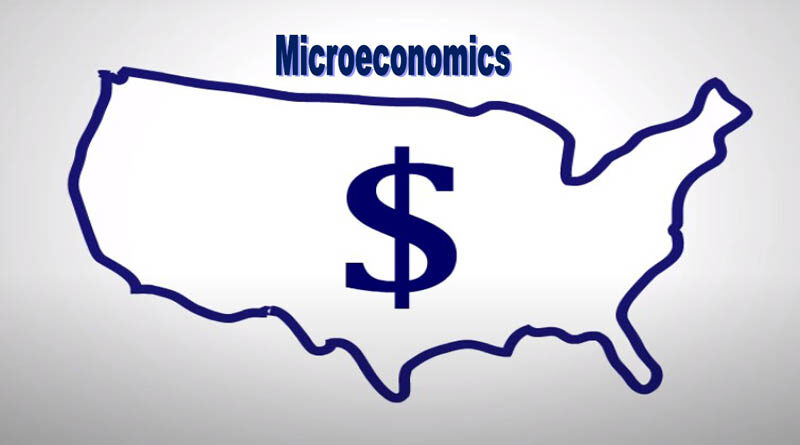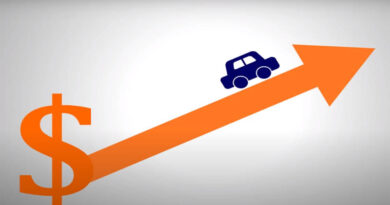What is Microeconomics? Theories, Models of Microeconomics
Microeconomics is a branch of mainstream economics that deals with how individuals and firms make decisions about the distribution of scarce resources, as well as the relationships between them. Microeconomics examines particular marketplaces, sectors, or industries rather than the entire national economy, which is the subject of macroeconomics.
However, Microeconomics includes as one of its goals the study of market mechanisms that determine relative pricing among products and services and distribute limited resources among different sources.
Microeconomics demonstrates the circumstances under which free markets produce beneficial allocations. It also looks into market failure, which occurs when markets fail to produce successful results.
Microeconomics is dealing with enterprises and individuals, whereas macroeconomics is dealing with the whole of economic activity, including topics such as growth, inflation, and unemployment, as well as national policies addressing this problem.
Microeconomics also studies the impact of economic policies on microeconomic behavior and, as a result, on the aforementioned components of the economy. Much of modern macroeconomic theory finds on micro-foundations, or basic assumptions regarding micro-level behavior, especially since the Lucas critique.
Thus, macro-economists and macroeconomists are two types of economists. The difference between microeconomics and macroeconomics was most likely developed in 1933 by Ragnar Frisch, a Norwegian economist. They receive the first Nobel Memorial Prize in Economic Sciences in 1969.
Theories of Microeconomics:
Consumer demand Theory:
Consumer demand theory connects consumer preferences for both products and services to consumption expenditures. Finally, the relationship between preferences and expenditure is employed to connect preferences to consumer demand.
Production Theory:
The theory of production, or the economic process of transforming inputs, calls the production theory. In a gift economy, the production uses the resources to generate a service or product that fits for use, gift-giving, or trade-in a market economy.
Cost of Production theory of value:
The production cost According to the theory of value, the price of an object or condition is determined by the total cost of the resources used to create it. The cost includes any element of production.
Opportunity cost Theory:
The concept of opportunity links to the concept of time limitations. One can only do one thing at a time, which means that one must always give up something else. The value of the next-best option activity that could have been done instead is the opportunity cost of any action. The value of the next-best alternative determines the opportunity cost.
Price Theory:
Price theory is a branch of economics that explains and predicts the behavior of people using the supply and demand model. The Chicago School of Economics explains price theory in detail. Price theory investigates market competitive equilibrium to provide testable hypotheses.
Models of Microeconomics:
- Supply and demand
- Perfect competition
- Imperfect competition
- Monopolistic competition
- Monopoly
- Oligopoly
- Monopsony
- Bilateral monopoly
- Oligopsony
Supply and demand
In a completely competitive market, supply and demand is an economic model for determining price. It maintains the unit price for a particular commodity. It is the price at which the demand of customers equals the equilibrium supply by producers in a completely competitive market with no externalities, per unit taxes, or price controls. A stable economic equilibrium depends on the result of this price.
However, the most directly observable features of products made and traded in a market economy define as prices and quantities. The supply and demand theory is a framework for describing how prices control the quantities produced and uses. In microeconomics, it refers to the determination of price and production in a market with perfect competition. It includes the absence of buyers or sellers with sufficient price-setting power.
Law of demand
Demand is the relationship between the numbers of all purchasers who would be willing to purchase at every unit price of the good in a particular market. Individual customers, according to demand theory, rationally choose the most desirable quantity of each good, given their income, prices, tastes, and other factors.
“Constrained utility maximization” is a word for this (with income and wealth as the constraints on demand). The utility here indicates each consumer’s postulated relationship for ranking distinct product packages as more or less desirable.
According to the rule of demand, the Price and supply-demand of products in a particular market have inversely link to each other. That is, the higher a product’s price, the fewer individuals are willing to buy it. When the price of a commodity lowers, buyers switch from more expensive products to it.
Law of supply
The supply is the relationship between the price of a product and the supply available for sale at a particular price. According to the “Law of Supply,” a price rise reflects the supply growth, whereas a decrease in price leads to a reduction in supply. Market equilibrium occurs when the supply equals the demand of products in the market.
Uses of Supply and demand
Demand and supply use include the allocation of revenue among factors of production, like labor and capital, via factor markets. For example, in a competitive labor market, the number of labor and the salary package of labor is determined by the demand for labor and the supply of labor. Labor economics studies how employees and employers interact in such markets to explain patterns and variations in salaries, as well as labor mobility, and unemployment. Productivity through human capital and other public-policy issues is the study of Labor economics.



